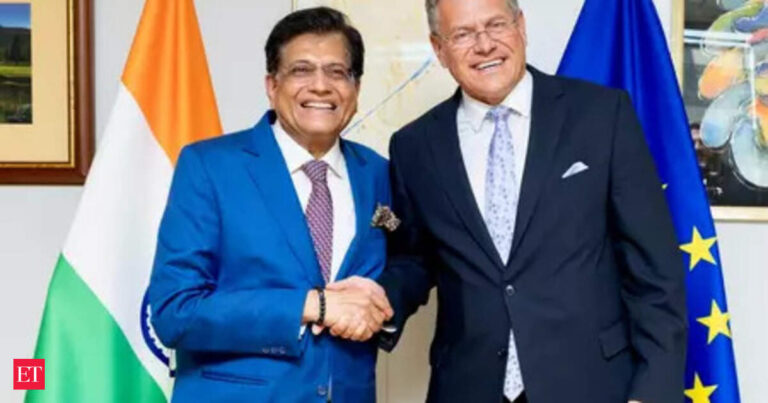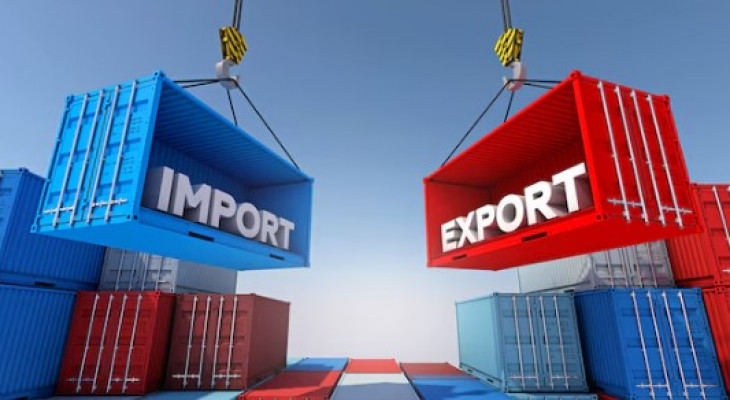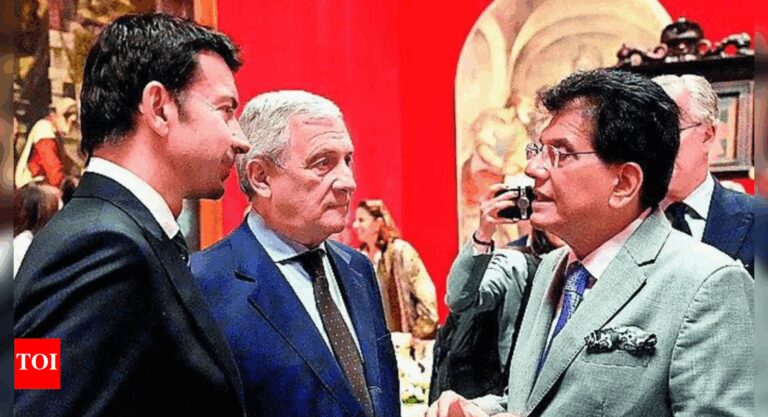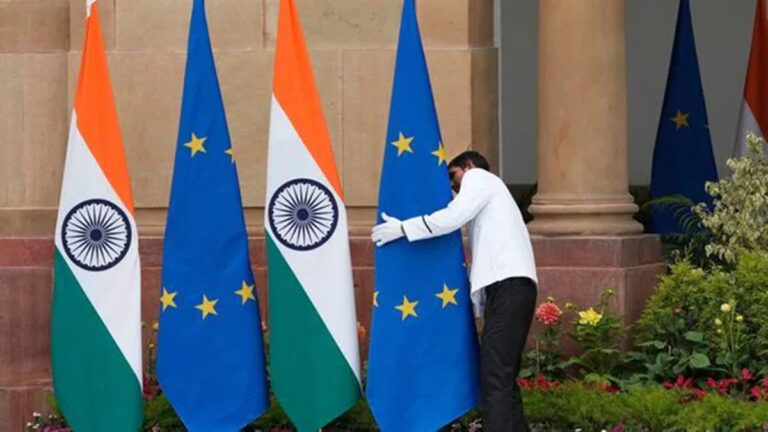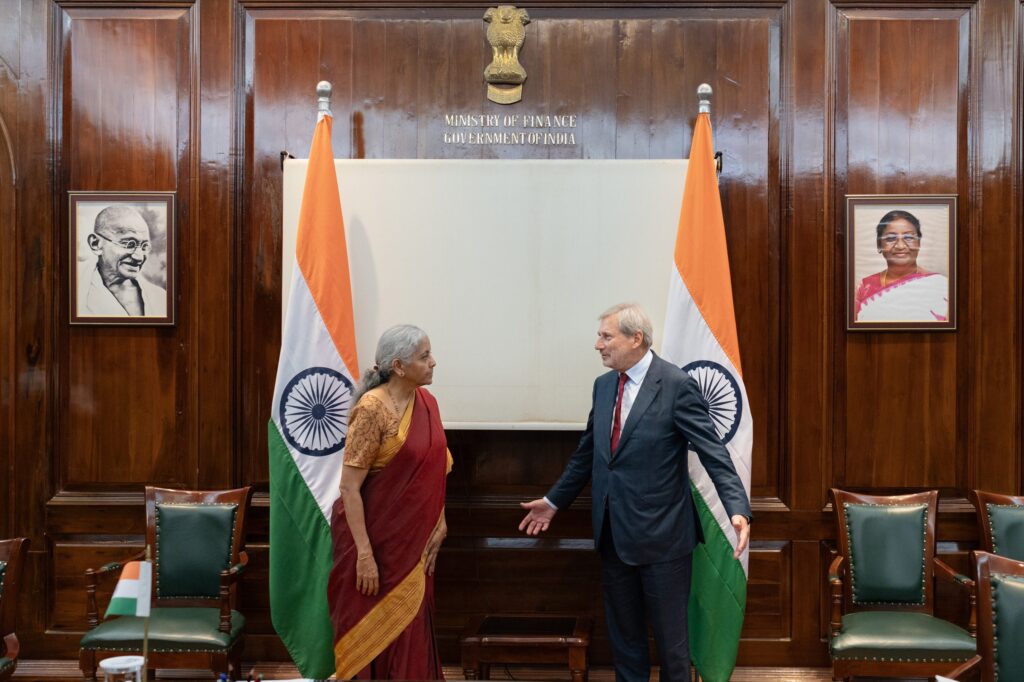
The European Union and India recently concluded the ninth round of negotiations on a draft free trade agreement (FTA). Although progress has been slow due to differences on key issues, an FTA remains in the interests of both parties.
“Trade is one of the essential elements of our relations. It is no coincidence that we are India’s most important trading partner,” said Johannes Hahn, European Commissioner for Budget and Administration. said the media during his recent visit to India.
“That is why the next step must be taken, and it must be a comprehensive FTA, which will be in the interest of both India and Europe,” added the commissioner, “there is always room for improvement.”
Negotiations on an India-EU FTA were officially restarted in June 2022, and the rapprochement has mainly focused on concluding this agreement. Last year, the EU exceeds the United States, becoming India’s largest trading partner.
These discussions took place in the context of the EU-India Trade and Technology Council (TTC), spear in February 2023, aimed at increasing bilateral cooperation and boosting trade and investment to ensure the technological and industrial leadership of the parties.
In a recent interview Along with Euractiv, Indian Ambassador to the EU Saurabh Kumar described the TTC as an important mechanism of the partnership, with both sides working in areas such as digital transformation, green technology and trade.
According to Ambassador Kumar, FTA negotiations are never easy, and the India-EU negotiations are no exception, but he said there is strong political commitment on both sides to conclude a global agreement.
“The FTA is not just about expanding trade. It has a strategic and political dimension. India and the EU are aware of this and are committed to working towards achieving this,” the Ambassador remarked.
Earlier this year, India signed a free trade agreement with the European Free Trade Association (EFTA), which sees investments worth $100 billion in the country. EFTA includes Norway, Switzerland, Iceland and Liechtenstein.
“The times to come will bring greater prosperity and mutual growth as we strengthen our ties with EFTA countries,” Prime Minister Narendra Modi said in a statement. statementwith a focus on creating opportunities for young people.
The agreement follows nearly 16 years of negotiations. Under the agreement, India will eliminate most tariffs on imports of industrial products from the four countries in exchange for investments over the next 15 years.
The FTA, final objective or starting point?
Although the strategic partnership is gaining momentum and both sides are moving towards stronger economic ties, driven by their common interest (reducing dependence on China), significant challenges remain. .
A analysis published by the Center for Research on Strategic and Security Issues (NatStrat) identifies the following differences: India’s relatively low share of global production and trade with the EU, high customs duties in India, European environmental regulations such as the Carbon Border Adjustment Mechanism (CBAM).
These fundamental trade issues, coupled with concerns over sustainability measures, have been on the negotiating table between the parties, with the Indian side raising concerns over the EU’s decision to impose unfair regulations on sustainability, labor standards, rules on deforestation and a carbon tax.
In this regard, NatStrat’s analysis highlights the importance of clarifying whether the conclusion of a free trade agreement would be the end goal or the starting point of the new geoeconomic relationship between the EU and India.
Although a full-fledged deal is far-fetched, the analysis concludes that India and Europe need to focus on smaller sectoral agreements before reaching a comprehensive free trade agreement.
He also suggests more open diplomatic channels, an understanding of each other’s political landscapes and resolving differences, such as India’s ties with Russia, as crucial steps to solidifying the partnership.
What do the EU and India want?
A report of the think tank Global Trade Research Initiative (GTRI) ahead of the ninth round of negotiations recommends a political push and a pragmatic approach to close the gaps and ensure that an FTA becomes the cornerstone of the strategic economic partnership.
According to the report, a successful FTA would boost trade and investment, create new opportunities for businesses and contribute to economic growth for both sides, including through reduced tariffs and strengthened commitments on services.
This would also boost exports on both sides. Major Indian products exported to the EU, such as ready-made garments, steel, petroleum products, electrical machinery and pharmaceuticals, would become more competitive. Exports of services such as telecommunications, commercial services and transport services would also see substantial growth.
For its part, the EU would benefit from increased exports of essential goods from India, such as planes and their parts, electrical machinery, chemicals and diamonds. The services sector would also benefit, with increased trade in other business services, intellectual property services, and telecommunications and IT services.
The EU is seeking to eliminate tariffs on more than 95 percent of its exports, including sensitive agricultural products and automobiles. India only wants to open about 90 percent of its market, reluctant to lower tariffs on bulk agricultural products.
Although India is committed to sustainability and environmental protection, it against instruments such as the Deforestation Regulation (EUDR) and CBAM are part of trade commitments. These are seen as instruments of protectionism and act as non-tariff barriers.
(Edited by Brian Maguire | Euractiv Advocacy Lab)
